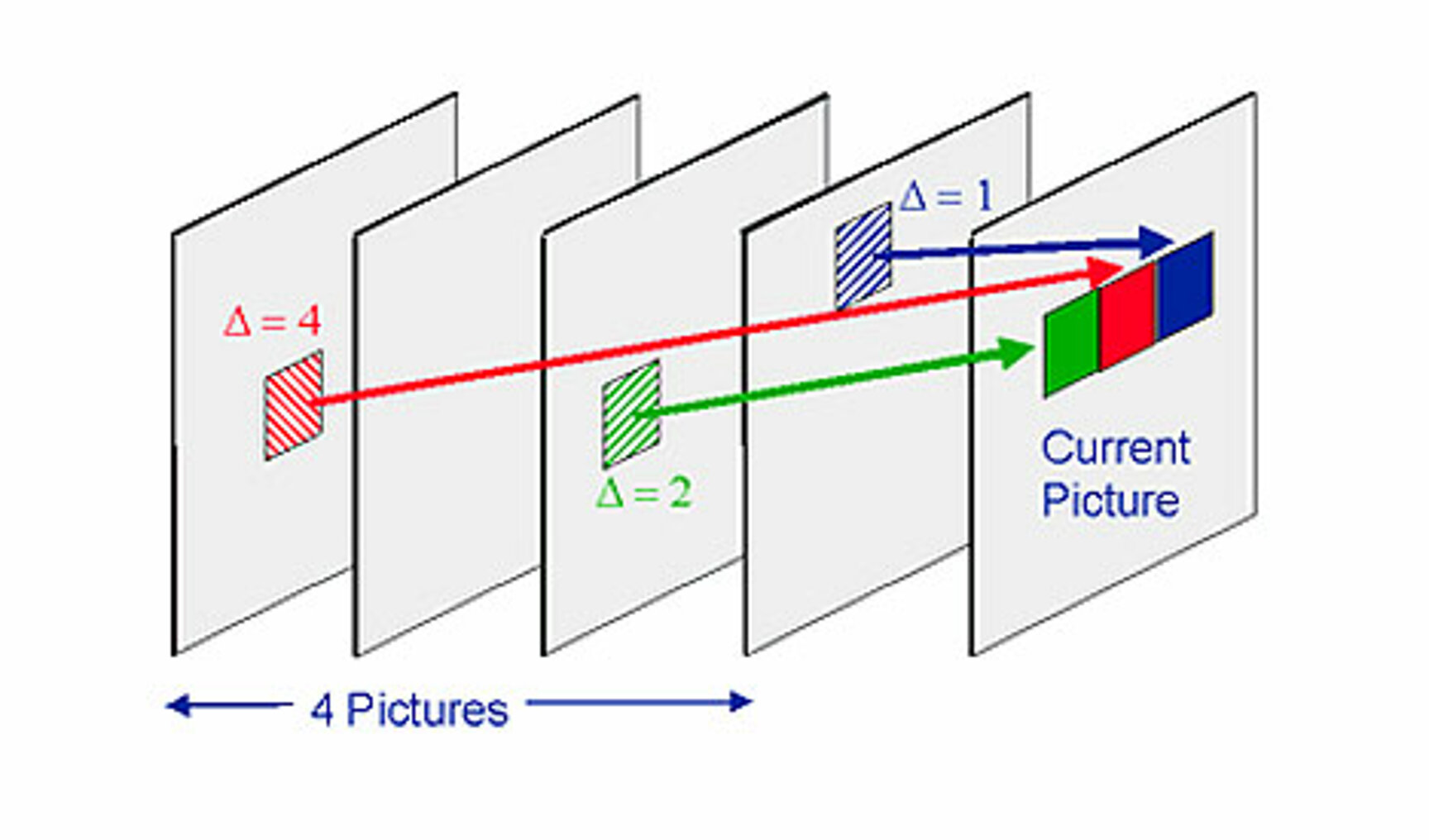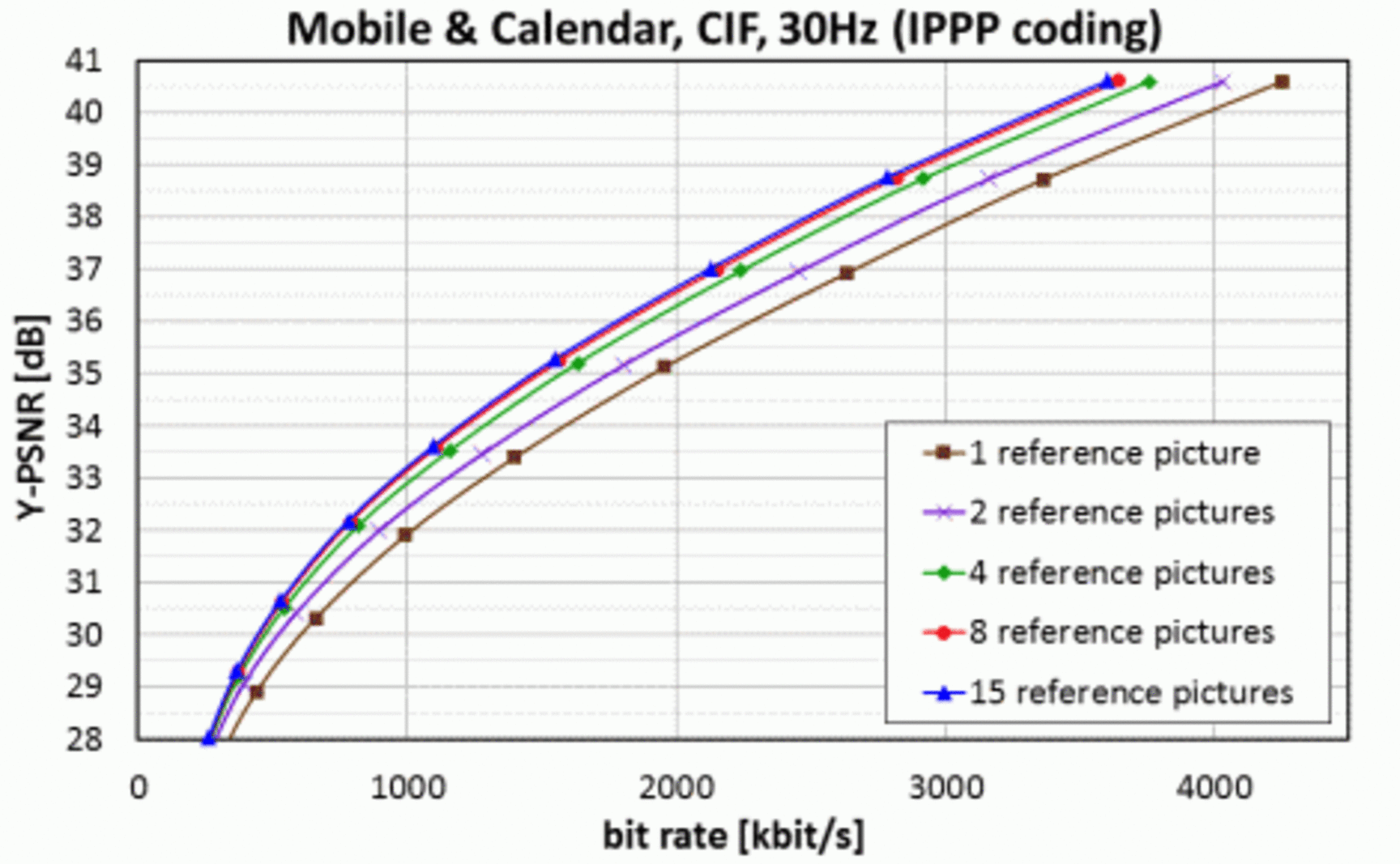Multi-frame motion-compensated prediction is a concept to increase the efficiency of motion-compensated prediction in hybrid video coding.
Multi-frame motion-compensated prediction extends the spatial displacement vector utilized in block-based hybrid video coding by a variable time delay permitting the use of more pictures than the previously decoded one for motion compensated prediction. This concept is illustrated in Figure 1.

Figure 2 shows rate-distortion curves that compare the coding efficiency of H.264/MPEG-4 AVC with different numbers of used reference pictures. As can be seen, increasing the number of used reference pictures generally increases the coding efficiency.

Multi-frame motion-compensated prediction in video coding standards
Multi-frame motion-compensated prediction is supported in the following video coding standards:
- H.263 (Annex U)
- H.264/MPEG-4 AVC
- HEVC
For H.264/MPEG-4 AVC and HEVC, the concept of multi-frame motion-compensated prediction was already included in the first Test Models and forms an integral part of the standards.
The concept of multi-frame motion-compensated prediction also builds that basis for a number of further developments for increasing coding efficiency or providing additional functionalities, including:
- The generalized B picture concept in H.264/MPEG-4 AVC [4]
- Multi-hypotheses motion-compensated prediction [3]
- The concept of hierarchical prediction structures
- The MVC extension of H.264/MPEG-4 AVC
References
- T. Wiegand, X. Zhang, and B. Girod, Long-Term Motion-Compensated Prediction, IEEE Transactions on Circuits and Systems for Video Technology, February 1999.
- T. Wiegand, N. Färber, K. Stuhlmüller, and B. Girod, Error-Resilient Video Transmission using Long-Term Memory Motion-compensated Prediction, IEEE Journal on Selected Areas in Communications, June 2000.
- M. Flierl, T. Wiegand, and B. Girod, Rate-Constrained Multihypothesis Prediction for Motion-Compensated Video Compression, IEEE Transactions on Circuits and Systems for Video Technology, November 2002.
- T. Wiegand, G. J. Sullivan, G. Bjøntegaard, and A. Luthra, Overview of the H.264/AVC Video Coding Standard, IEEE Transactions on Circuits and Systems for Video Technology, July 2003.